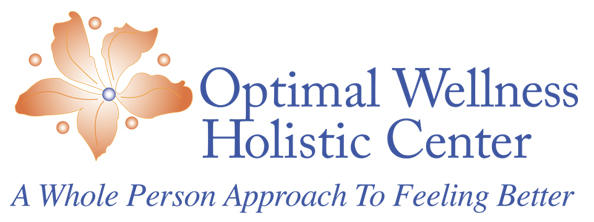What if I told you that your muscle health is one of the strongest predictors of how well — and how long — you’ll live?
We often think of muscle as something aesthetic or athletic. But in functional medicine, we see it as so much more.
Muscle is your metabolic engine.
Your blood sugar regulator.
Your anti-inflammatory defense.
Your hormone stabilizer.
Your independence protector.
And starting as early as age 30, we begin to lose it — silently and steadily — unless we actively do something to preserve it.
What Happens When We Lose Muscle?
- We lose 3–8% of our muscle mass every decade starting in our 30s
- After 60, that rate can double
- By 80, the average person has lost 30–50% of their muscle mass
- Every pound of muscle lost is often replaced with fat, which slows metabolism and increases disease risk
- We also lose mobility, balance, strength, and independence
Here’s a shocking fact:
For every pound of muscle lost, we may gain a pound of disease-promoting fat.
And while muscle burns 50–100 calories/day, fat only burns 3. This metabolic shift is one reason why people gain weight and feel more fatigued with age — even if their lifestyle hasn’t changed.
Loss of muscle doesn’t just change how we look. It raises the risk for:
- Insulin resistance and type 2 diabetes
- Cognitive decline and Alzheimer’s
- Chronic inflammation and autoimmune issues
- Falls, fractures, and long-term disability
The Good News? You Can Reverse This.
Even in your 50s, 60s, 70s, and beyond, muscle is one of the most “trainable” tissues in the body. You can rebuild it — and with it, your energy, strength, and metabolism.
The Science Behind Why Muscle Is So Powerful
Muscle acts like a glucose sponge, storing 80% of your body’s glucose and helping prevent blood sugar spikes. It boosts insulin sensitivity, improves cholesterol, and helps stabilize hormones.
It also produces myokines, special signaling molecules that:
- Lower systemic inflammation
- Enhance immune function
- Protect your brain and support your mood
- Help repair damaged tissues
Muscle supports your mitochondria (the engines of your cells), which are essential for energy, mental clarity, and slowing biological aging.
What You Can Do to Build and Preserve Muscle
- Prioritize Resistance Training
At least 2–3x per week. You don’t need a gym — bodyweight, resistance bands, and dumbbells at home work well. YouTube trainers like Caroline Girvan offer excellent, free programs. - Eat Enough Protein — Especially After Strength Training
Muscle doesn’t grow from exercise alone. It needs the right building blocks — especially protein and amino acids — to repair and grow.
Here’s what to aim for after strength workouts:
- Premenopausal women: 30–40g of protein
- Perimenopausal and menopausal women: 40–60g of protein
- Men: 40–60g of protein post-workout
And throughout the day, a good general target is:
- Aim for 0.7 to 1 gram of protein per pound of body weight, spread evenly across meals. (If you’re over 40, under stress, or doing strength training, aim for the higher end — closer to 1 gram per pound.)
Focus on high-quality protein sources like eggs, fish, poultry, and grass-fed meats. Plant-based options like tofu and lentils (when paired with rice) can work too, though adding leucine — a key branched-chain amino acid (BCAA) — may further support muscle growth.
- Want a breakdown of how much protein is in common foods? [Click here for a quick guide.]
3. Focus on Key Nutrients
Muscle health relies on essential nutrients like vitamin D, vitamin C, zinc, calcium, boron, and magnesium — all important for hormone balance, recovery, and muscle function. But when it comes to actually building and preserving muscle, the most critical players are BCAAs, creatine, glutamine, and magnesium.
In our practice, we use a clinically backed, patented formula that combines these key nutrients — shown to support muscle growth even more effectively than prescription testosterone. [Click here to learn more.]
- Get Quality Sleep
Muscle repair happens at night. Sleep is not optional — it’s when your body turns today’s efforts into tomorrow’s strength. - Heal Your Gut & Lower Stress
Chronic gut issues and high cortisol levels can block nutrient absorption and lead to muscle breakdown. A holistic health approach that supports gut repair and adrenal balance is essential for restoring energy and protecting muscle mass over time. - Eat a Balanced Diet and Avoid Low-Calorie Pitfalls
Fuel your body with a balanced mix of healthy carbohydrates, fats, and protein. Diets that drop below 1,200 calories a day can backfire—slowing your metabolism, triggering muscle loss, and even promoting fat gain over time.
Remember, the goal isn’t just weight loss — it’s sustainable energy, strength, and long-term health. Nourishment, not deprivation, is what builds a resilient body.
Final Thoughts:
We don’t lose muscle because we age —We age because we lose muscle.
If you want better energy, blood sugar, brain function, metabolism, mood, and mobility — build muscle.
Let this be your reminder that it’s never too late to get stronger, more energized, and more empowered in your body.
Because muscle isn’t just about movement — it’s your most protective, powerful medicine.
If you’re struggling with low energy, muscle loss, or just want to support your metabolism and healthy aging, call us at 919-791-0445 to schedule a holistic health consultation. We’ll uncover the root causes and create a personalized plan to help you feel stronger, healthier, and more resilient.
